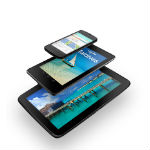 In the mobile service provider business, one of the classic signs of potential customer churn is a pattern of diminishing use. But that is but one of scores to hundreds of key performance indicators mobile service providers can monitor when attempting to protect their current customer base.
In the mobile service provider business, one of the classic signs of potential customer churn is a pattern of diminishing use. But that is but one of scores to hundreds of key performance indicators mobile service providers can monitor when attempting to protect their current customer base.
One therefore wonders whether changing patterns of usage, including significant shifts of activity between personal computers, smart phones, tablets and other devices might wind up being an early indicator that changing consumer preferences in terms of device usage could lead to changes in preferences for Internet access as well.
From PCs to Tablets
And there are clear signs of behaviorial change. Content that was once primarily accessed by consumers on their PCs is shifting to mobile devices, according to the NPD Group.
Some 37 percent of consumers who used to access content on their PCs switched to their tablets and smart phones.
The top two activities that consumers are shifting from their PCs to their tablets and smart phones are web browsing and Facebook. And that could be significant since browsing and use of Facebook are key end user pursuits that require use of broadband access services.
Among tablet owners, 27 percent say they are using their PC less frequently for accessing the Internet and 20 percent say they are using their PC less frequently for accessing Facebook.
Some 27 percent of smartphone owners report they have decreased both their Internet and Facebook usage on their PCs because they now use their smart phone for these activities.
To be sure, Internet browsing is still highest among PC owners at 75 percent, compared to smart phones, 61 percent of whose owners browse the Internet on those devices.
Some 53 percent of tablet users likewise say they browse the Internet on their tablets.
Some 63 percent of PC owners say they use Facebook on their PCs. About 55 percent of smart phone owners report doing so, while 39 percent of tablet owners say they use Facebook on those devices.
Top Activities Where Mobile Devices Mitigate Computer Usage
| Tablet | Smartphone | |
| #1 | Internet Browsing | Internet Browsing |
| #2 | ||
| #3 | Play free games (Tie for 3rd) | Post/Upload Photos |
| Read books/magazines(Tie for 3rd) |
So far, perhaps 87 percent of smart phone users also have had access to fixed network broadband access. So one might logically argue that, up to this point, smart phone broadband access has been complementary to fixed network access, not a substitute.
But as executives in the mobile business might point out, declining usage is typically a very good predictor of potential churn, whether that is minutes of use, text message volume or kilobytes of Internet access.
It probably is too early to say, but changing patterns of application usage, on different devices attached to different networks, should eventually lead customers to consider changes in the use of those networks.
Outright abandonment might be less likely, at first, than simple downgrading of levels of service. The point is that such changing patterns of usage should, eventually, lead consumers to better align their access purchases with the actual way they have started to consume applications and content on different devices and networks.

